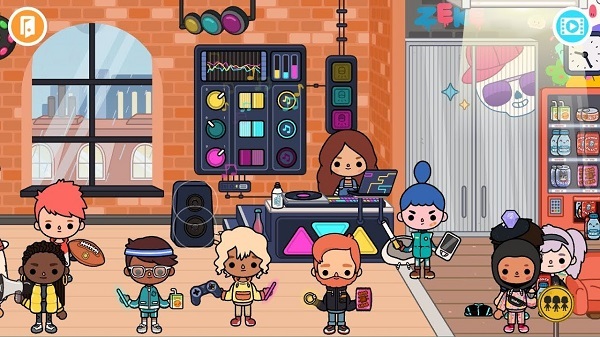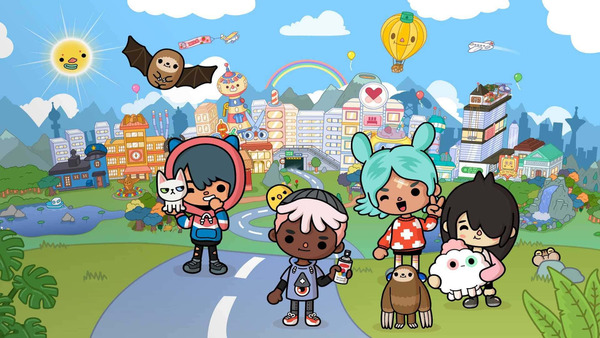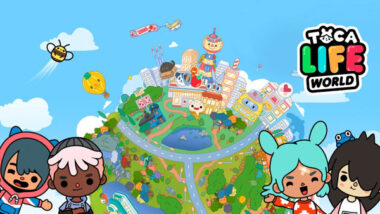Introduction
Toca Life is beloved for its creative freedom, allowing players to shape their worlds and tell unique stories. Yet, creating a fully customized Toca Life experience involves navigating various settings, character-building options, and items. In this guide, we’ll explore how to unlock the full potential of customization in Toca Life, focusing on in-depth tips for character design, location setting, and item utilization. If you’re ready to take your Toca Life gameplay to a new level, read on for the ultimate customization guide.
Maximizing Character Customization
Toca Life offers a wide variety of options for creating unique characters, but achieving the perfect design can be challenging without understanding the full scope of customization tools.

Toca Life offers a wide variety of options for creating unique characters, but achieving the perfect design can be challenging without understanding the full scope of customization tools.
Exploring Appearance Options
Each character can be customized by changing physical features, clothing, and accessories. Understanding these options is key to creating characters that stand out.
Adding Personal Touches to Characters
Beyond appearance, adding personality traits or unique accessories helps make characters memorable. Try assigning props or items that reflect their interests.
Using Props to Enhance Characters
Props are essential in Toca Life for expressing character personality and story. They add depth to the game’s narrative by complementing character design.
Selecting Signature Props
Choose a specific prop for each character to make them more distinct. For example, a paintbrush for an artist or a book for an academic.
Using Props in Scenes
Incorporating props into daily scenarios adds continuity and makes interactions more engaging. Characters with consistent items feel more real.
Creating Theme-Based Rooms and Settings
Toca Life’s various locations allow players to create themed rooms that reflect character personalities or storylines, enhancing the game’s storytelling aspect.
Choosing Color Schemes and Themes
Color and decor are key to creating a cohesive theme. For example, a scientist’s lab should be more sterile and organized, while a musician’s room can be vibrant and cluttered.
Utilizing Furniture for Ambiance
Select furniture that aligns with the room’s theme. A room filled with cozy pillows and soft lighting creates a relaxed environment.
Customizing Public Spaces for Storytelling
Public areas in Toca Life, like parks and restaurants, provide a background for character interaction and storyline progression.
Transforming Public Spaces with Items
Adding props or arranging the scene differently each time enhances realism. Customize restaurant layouts based on the event, like a birthday or date.
Creating Character Interactions in Public Spaces
Public settings serve as meeting points where characters can engage in meaningful interactions, making these spaces dynamic storytelling hubs.
Using Color to Convey Mood and Personality
Colors impact a scene’s emotional tone. Using color purposefully can subtly influence players’ perceptions of characters and settings.
Choosing Colors to Represent Moods
Cool colors (blue, green) can create calm scenes, while warm colors (red, yellow) add energy. Apply these choices in settings that fit character moods or story events.
Matching Colors to Personalities
Assign colors to specific characters to represent their traits. For instance, an outgoing character might have a bright wardrobe, while a shy character might wear muted colors.

Assign colors to specific characters to represent their traits. For instance, an outgoing character might have a bright wardrobe, while a shy character might wear muted colors.
Creating Dynamic Storylines Through Items
Toca Life’s array of items offers endless ways to build interactive storylines. Strategically placing and using items allows for deeper plot development.
Using Special Items to Develop Stories
Unique items such as journals, keys, or letters can act as story triggers, hinting at past events or secrets for players to uncover.
Creating Item-Driven Missions
Design scenarios where characters must find or use items to progress, like searching for a hidden key or discovering a secret message.
Engaging Characters in Role Play Scenarios
Role play enhances Toca Life by allowing players to act out specific scenarios, deepening character relationships and advancing plots.
Designing Scenarios Based on Character Traits
Base scenarios on each character’s interests. A chef could host a cooking contest, while an artist could start a mural project.
Creating Complex Group Interactions
Combine character roles to build group scenarios. This could mean having a team of detectives solving a mystery or a group of friends planning a surprise.
Using Settings to Reflect Story Progression
Changing locations over time or modifying settings creates a sense of progression, making the game world feel alive and evolving.
Modifying Settings for Seasonal Changes
Update scenes to reflect different seasons. For example, decorate rooms with festive items for holidays or add flowers in the spring.
Adjusting Rooms for Story Arcs
As characters’ stories evolve, update their rooms to reflect these changes. After a big achievement, decorate the room with trophies or souvenirs.
Exploring Advanced Editing for Detail-Oriented Players
For players who love detail, exploring advanced customization offers further opportunities for unique storytelling.
Combining Items to Create New Props
Layering items can make new props. A box and a pillow could become a makeshift bed, or combining kitchen tools might resemble an experimental lab setup.
Customizing Backgrounds and Patterns
Background details like wallpaper or floor patterns contribute to the ambiance. Experiment with different combinations to find the ideal setting.
Documenting Stories for Replay and Sharing
Recording and sharing stories is a way to relive and celebrate Toca Life moments. Use creative methods to capture these unique stories.
Saving Key Moments
Capture screenshots or short clips of significant moments in your stories, creating a personal archive to revisit and share with friends.
Sharing Stories on Social Media
Share your favorite Toca Life scenes or storylines on social media platforms where the Toca Life community can engage and provide feedback.

Share your favorite Toca Life scenes or storylines on social media platforms where the Toca Life community can engage and provide feedback.
Conclusion
Customization in Toca Life offers nearly limitless possibilities for creative storytelling, allowing players to build characters, settings, and narratives with intricate detail. By applying advanced techniques like character backstory development, item-driven plots, and thematic settings, players can enrich their game experience beyond surface-level gameplay. Embracing these tools will unlock a more engaging and immersive world within Toca Life.


